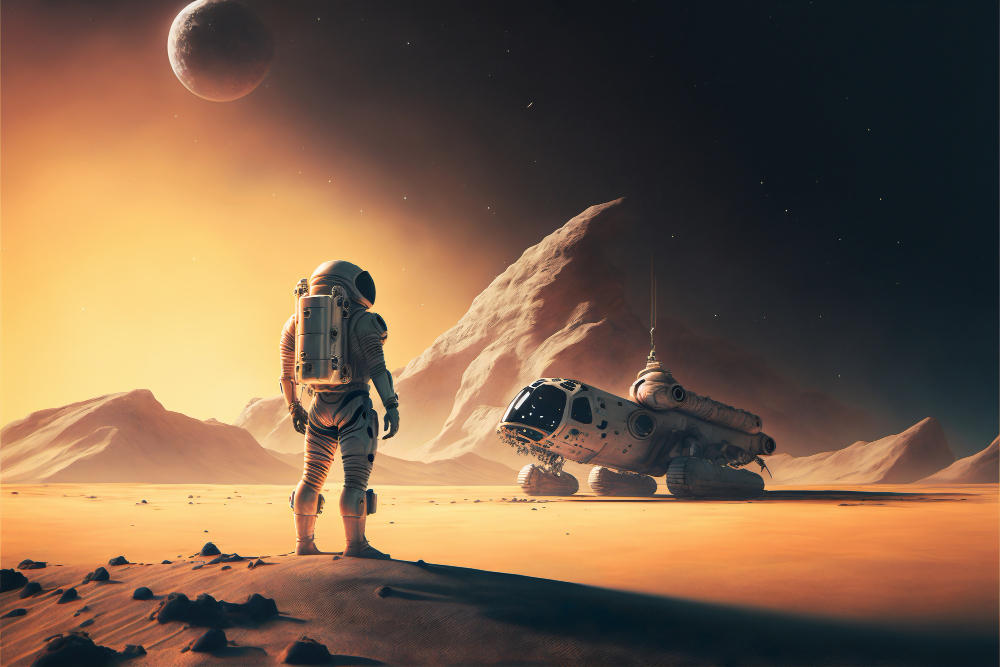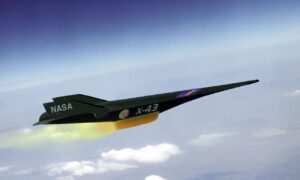
Table of Contents
The Orbital Dance and Launch Windows
Bathed in the brilliance of a billion suns, our story unfurls across the cosmic stage, where two celestial dancers—Mars and Earth—perform their orbital ballet. Earth, nimble and blue-hued, pirouettes around the Sun in a swift 365-day routine. Mars, with its reddish tint and a more leisurely pace, extends its own orbit into a grand arc lasting near about 687 of Earth’s diurnal rhythms.
Their dance is neither random nor fleeting, but a meticulously choreographed spectacle dictated by the immutable laws of celestial dynamics. The Sun, a maestro of gravitational pull, conducts this cosmic dance from the center of our Solar System, ensuring each planet follows its predetermined path through the vacuum of space.
Earth as it twirls around this solar stage. Its path nearly circular, it loops around our star with steadfast haste. Mars, trailing on a more elliptical track, swings wide and then close, like a fiery performer keeping to its own dramatic tempo.
Cast against the velvety backdrop of space, their orbital paths rarely cross in close proximity, given the vastness of their performance arena. Yet, approximately every 26 months, a captivating moment in their dance arrives; the planets align within the same quadrant of their cosmic dancefloor, an event prelude to the anticipated ‘Hohmann Transfer Orbit.’
Named after the German scientist who first described it, the Hohmann Transfer Orbit is the most energy-efficient route between two planets. It’s akin to a carefully timed leap taken by a dancer. In space travel, this translates to planning launches for when Earth has approached its closest point to Mars before they diverge once more on their solar odyssey. Timing is everything; an early or late departure would require an untenable expenditure of fuel to catch up or wait for the Red Planet.
Within these launch windows lies humanity’s best chance to voyage between these worlds. Craft departing Earth must ignite their engines precisely when the window creaks open, hurtling through the void to intercept Mars as it sashays into position. This dance is not just a matter of speed, but of delicate orbital mechanics, precision, and the immutable nature of physical laws that even the most daring spacefarers must respect.
And so, for space agencies and visionaries looking to traverse the celestial expanse to Mars, these windows are eagerly awaited. They mark the junctures at which the distance between Mars and Earth dwindles to a mere cosmic stone throw, albeit one stretching millions of miles.
For those on Earth, the opening of a launch window is a herald of exploration, of bold quests and of missions that blend human ingenuity with a touch of cosmic fortune. Each window is brief, but the opportunities and dreams it represents are as boundless as the universe itself—a testament to humanity’s relentless pursuit to understand and explore the great dance of the planets.
The Strategic Journey: Timelines and Spacecraft
In the grand tapestry of space exploration, the voyage to the Red Planet stands as a testament to human ingenuity. Embarking upon this interplanetary odyssey, the spacecraft are like ancient vessels navigating the cosmic sea, guided by the invisible currents of gravitational forces and the rhythmic dance of celestial bodies.
The planning of such a journey is an intricate weave of science and strategy. The Earth and Mars, two spheres locked in their perpetual promenade around the Sun, come closest to each other every 26 months, a cosmic window that beckons with promise. This opportune moment is the universe extending an invitation to breach the vast expanse that lies between the terrestrial and the Martian realms.
Conventional spacecraft, harnessed with the power generated by current rocket technologies, can traverse this expanse in a time frame ranging from six to nine months. But this is not a mere mark on the calendar; these figures are born out of a meticulous calculation of celestial mechanics, rocket science, and a deep understanding of cosmic ballet.
The journey as a delicate archer’s bow, drawn back and poised. The rocket is the arrow, Earth is the archer, and Mars the distant bullseye. The moment of release—the launch—is timed to absolute perfection. It is a fine line where the force of human aspiration meets the natural laws of the cosmos.
The spacecraft’s engines ignite, breaking the hold of Earth’s gravity, and the vessel sets forth on a trajectory that is as much a work of art as it is of science. This trajectory is not straight but curved, an elegant pathway designed for efficiency, known as the ‘Hohmann Transfer Orbit.’ Named after Walter Hohmann, who conceived the maneuver in 1925, it is an elliptical orbit that touching the realm of Earth swells outward to the orbit of Mars.
As if Earth whispers to its departing child, imparting momentum, the spacecraft is sent forth on an elliptical path. This path is carefully orchestrated to intersect with Mars’ own orbit, akin to two dancers set to meet at a preordained spot on the dance floor. The spacecraft coasts along this route, conserving precious fuel, surrendering to the fundament forces of the universe. It’s a journey powered largely by the initial fiery burst that launches it from our planet’s surface and the gravitational pull of the spheres it navigates.
Efficiency is the guiding star for this voyage. The peculiar charm lies in the timing; too early or too late, and the craft would miss its distant rendezvous. The Hohmann Transfer Orbit, while the most fuel-efficient path, is nonetheless a fleeting corridor, its existence ephemeral, contingent on the very alignment of the planets.
Arriving at Mars after months of cosmic sailing, the spacecraft approaches with care. It must precisely enter an orbit or commence a landing sequence—a process on which hangs the success of the entire mission, consummating a journey that, while constrained by physics, is powered by something far more boundless – the human spirit’s drive to explore, to reach out, to touch another world.
Thus, the strategic journey to Mars stands as more than a feat of distance; it is a carefully choreographed interplanetary waltz, where timelines, technology, and celestial mechanics converge in a confluence of human ambition and the natural order, yielding a saga woven in the vastness of space.
Missions Past: From Mariner to Perseverance
The chronicle of Martian exploration is a testament to human curiosity and our never-ending quest to comprehend the unknown. Our celestial neighbors have often beckoned, but none more so than the enigmatic Mars, a world that has captured imaginations and spurred countless quests across the vastness of space. It begins in the mid-20th century with the pioneering endeavors of missions past, from the audacious Mariner spacecraft to the latest, most sophisticated ambassador, Perseverance.
Casting off the Earth’s gravitational chains, the Mariner 4 embarked on an unprecedented odyssey in 1964. Its destination was Mars, a realm of alien deserts and towering volcanoes that had beckoned sky-gazers for centuries. The journey Mariner 4 undertook was not a mere traverse across the cosmos; it marked humanity’s leap into deep space—our first brush with another planet of our solar system. Over the course of 228 days, Mariner 4 cruised the interplanetary void, a lonely emissary flung from our blue orb’s embrace towards a silent, ochre speck hanging in the starry expanse.
Navigating by the stars and carried by the robust vigor of its Atlas rocket, Mariner 4’s extended voyage culminated in a flyby that forever changed our view of the Red Planet. The spacecraft’s primitive but effective camera snapped the first close-up images of Mars—grainy by today’s standards but priceless to the scientists of the day. Cold craters and a barren landscape stared back, challenging prior speculations of Martian canals and teeming life.
Fast-forward nearly five decades to a landscape simmering with advanced technologies. The Mars Science Laboratory, christened with the more personable moniker Curiosity, set sail for that same distant world. Unlike its forebearer Mariner 4, Curiosity had a destiny that reached beyond mere flyby; it was designed to kiss the Martian soil, to rove its surface, to become a scientist on alien ground.
The intricate dance of celestial mechanics dictated a journey lasting about nine months, an interlude filled with check-ups, course corrections, and the unfaltering vigilance of the team back home, their eyes fixed on the stars. But it wasn’t the expanse of interplanetary space that held the most daunting challenge; it was the final seven minutes.
These “seven minutes of terror” were a plunge through Mars’ thin atmosphere, a white-knuckle descent that saw Curiosity slowed from 13,000 mph to a gentle touch on the rust-tinted soil—courtesy of a supersonic parachute and a groundbreaking sky crane which, in an act considered almost science fiction, lowered the rover gently to its new home on alien soil. There, amidst the dust and rock of a world 140 million miles away, Curiosity awoke and took its first gaze upon the landscape it would come to know.
Each mission, Mariner to Perseverance, is a chapter in a saga that spans decades, personalities, and technologies. They are parts of a mosaic that pieced together Mars, not just as a destination, but as a bridge between the heavens and humanity’s hunger for knowledge. The story of Martian exploration encapsulates more than machines and missions; it is a continuous narrative of our greatest voyages, underpinned by the undying resolve to uncover the mysteries veiled within our solar neighbors.
The Future Awaits: Innovations Shortening the Voyage
Beyond the Earth’s atmosphere, the ink-black canvas of space is punctuated by the red hue of a distant speck—our neighbor, Mars. For years, this tantalizing globe has whirled in its orbit, beckoning adventurers from its cosmic traverse. But the journey to Mars is not a mere hop and skip away. It’s a sojourn across millions of miles, taking many months with current technology. However, the heartbeat of progress thrums with anticipation; the future teems with innovations that foreshadow a brazen era of interplanetary expeditions, noticeably shortening our voyage to the Red Planet.
In the vanguard of this technological renaissance is SpaceX. The company, steered by the indomitable will of Elon Musk, looks to the stars not as distant points of light, but as mile markers on the path of human exploration. SpaceX invokes a bold vision where its Starship, a behemoth of spacefaring dreams, serves as humanity’s chariot to Mars. Gleaming in the sunlight, this colossal vessel is being designed to slice through space, cutting travel times to a mere six months.
But this is just the nascent stage of a longer odyssey of innovation. Starship not just as a vessel, but as the harbinger of a new space-travel lexicon—where “faster” is the defining word. The secret lies within its beating heart: the propulsion system. Current chemical rockets have served us well, but SpaceX’s eyes glisten with the promise of nuclear thermal rockets (NTRs). Here lies the potential to turn the stuff of science fiction into palpable reality, leveraging the colossal energy harnessed from nuclear reactions to thrust our brave explorers through the heavens.
NTRs might be the titans we’ve awaited for, offering a Herculean leap over conventional propulsion. With these, Starship wouldn’t only glide through the void; it would surge, muscles of nuclear fire propelling it with unrelenting force, diminishing the Earth-Mars odyssey considerably. Researchers feverishly seek to surmount the technological hurdles these reactors pose, driven by the thirst for a faster path to Mars and beyond.
The age-old axiom “time is money” transforms in the vacuum of space to “time is life,” as every second saved is another cherished moment astronauts spend less exposed to the cosmic radiance and the void’s icy grip. In this venture where every moment is precious, SpaceX’s relentless pursuit is more than a mere enterprise—it embodies humanity’s unyielding urge to conquer vastness and achieve the extraordinary.
With the future painted in strokes of ingenuity and courage, the voyage to Mars stands on the cusp of revolution. It is not an overstatement to say we live in a historical crease, a fold in time that future generations will look back upon as the moment when the horizon leaped closer, brought into our grasp by the bold dreams and tireless labors of those who dared to redefine the possible.
The future awaits indeed, and in it, a vision of interplanetary travel recreated, reinvented, and redefined. A journey to Mars condensed not just by extremes of engineering and science, but by an unyielding human spirit that whispers through the cosmos with a simple, resolute message: faster, further, forward.
Parker Solar Probe: The Fastest Journey to Unravel the Sun's Secrets
NASA’s Parker Solar Probe stands as an unparalleled feat of modern engineering, acting as our very own interplanetary racing car. Designed to unlock the mysteries of the Sun, it has, quite literally, set the pace for space exploration speed records.
Video from: Wikipedia
As the probe passed through the Sun’s corona in early 2021, it flew by structures called coronal streamers
At its swift zenith on November 21, 2021, during its 10th perihelion—the point in its orbit closest to the Sun—the Parker Solar Probe blistered through the sun’s extreme outer atmosphere, the corona, at a velocity that almost defies imagination. Hitting speeds of 101 miles (163 kilometers) per second, it traveled faster than any other manmade object relative to the Sun. When given a terrestrial perspective, this translates to a staggering velocity of 364,621 miles per hour (586,000 kilometers per hour).
What propels the Parker Solar Probe to such extraordinary velocities? The primary accelerant is gravity assist, specifically from our own star. As the spacecraft gets closer to the Sun, the star’s immense gravitational field pulls it in faster and faster, much like a slingshot effect. The closer the encounter, the stronger the gravitational pull, and thus the greater the spacecraft’s speed.
But it’s not just raw speed that makes the Parker Solar Probe special. It’s the purpose behind each hair-raising dive towards the Sun’s surface. This mission is designed to achieve something unparalleled: to survive within the scorching conditions of the solar atmosphere, to gather vital information about the solar wind, and to help us understand why the corona is millions of degrees hotter than the Sun’s surface.
To survive such a hostile environment, the probe is armored with a cutting-edge heat shield. This 4.5-inch-thick carbon composite shield is capable of withstanding temperatures of nearly 2,500 degrees Fahrenheit (about 1,377 degrees Celsius), ensuring the spacecraft’s instruments remain at a tolerable temperature around room temperature.
The anticipated crescendo of the Parker Solar Probe’s symphony of speed is set to occur in December 2024. The probe will complete another daring approach, this time coming within about 4 million miles (6.2 million kilometers) of the solar surface. In this intimate pass, NASA estimates the craft will exceed speeds of 430,000 miles per hour (over 692,000 kilometers per hour). At this extraordinary speed, the probe could cover the distance between New York and Tokyo in under a minute.
In sum, the Parker Solar Probe’s unmatched velocity isn’t solely about breaking records. Each surge towards our star is a leap in knowledge, a closer step towards comprehending our Sun’s processes, and by extension, the workings of stars across the universe. This mission, through engineering marvels and daredevil speeds, holds the promise of answering longstanding questions that have puzzled solar scientists for decades.
The Human Factor: Psychological and Physical Demands
Amidst the astounding calculations and precision of celestial mechanics that make space travel possible, lies an elusive variable: the human factor. This element cannot be quantified into equations, for it pulses with the beating of hearts and the thrum of emotions coursing through astronauts as they venture into the cosmos.
Consider the grand tapestry of stars as a hostile yet beautiful canvas where astronauts cast the story of human endurance and vulnerability. Space, in its infinite silence and majesty, forces humans to confront the full spectrum of psychological demands. Here, cloistered within the confines of a craft that’s more than a vessel—it’s their lifeline—astronauts face isolation, the stir of homesickness, and the weight of solitude that can press upon the psyche with a force stronger than gravity itself.
These explorers of the unknown, strapped into the frontiers of human ingenuity, are not only separated by the vastness of space but also by the peculiar distance from the familiarity of Earthly life. Enveloped in the constant hum of machinery, the absence of natural winds, the Earth-rise instead of sunrise, they must adapt to an otherworld called ‘routine’. A routine in which their sleep is not night-driven, and their communication is a delayed echo bouncing off the edge of space.
The physical demands are no less daunting. The body, an exquisite construct attuned to Earth’s gravity, is bereft of its lifelong dance partner—weight. Bones begin to whisper of brittleness, muscles gently atrophy, and the heart, that tireless drummer, finds the rhythm of its beat slightly off. Over time, even the simple act of floating, as ethereal as it looks, becomes a grand reminder of the human body’s innate ties to its home turf, Earth.
Thus emerges the intertwined destiny of space travel duration, life support innovation, and the endeavor to mimic Earth’s nurturing environment. The life support systems are alchemy in motion, transmuting recycled air and water to sustain life. Space habitat design seeks to morph into a simulacrum of Earth’s conditions, cognizant that the dome of sky and the feel of wind are beyond replication. Mission designers delve deep into ergonomic sorcery, fashioning living quarters that are less about quarters, and more about making space feel like home.
And, of course, there’s the unyielding study of human resilience. Each mission is also a laboratory, each astronaut a case study in microgravity’s classroom—how does the human spirit fare when unmoored from its natural cradle? These voyagers are human in more than form; they are the bearers of an indomitable spirit, reaching into the unknown with the fortitude that has spurred humanity across oceans, deserts, and now, the silent sea of space.
The path of human exploration extends further, as boundless as the universe itself. Embraced by the void, cosmonauts and astronauts persist, charting a course not just across the night sky but deeper into the human potential, proving the vast expanse of space is matched only by the depth of human will to conquer not just worlds, but the barriers within ourselves.
Conclusion
For stargazers and scientists, the trip to Mars resonates with the spirit of discovery. And as we inch closer to sending humans to trace the path of our robotic explorers, this time frame will become a critical measure of our technological and exploratory advancements.
The trip to Mars captivates our imagination, demanding answers that blend orbital mechanics with human endurance. As we develop swifter and more robust spacecraft, the day when the answer to “How long does it take to get to Mars?” becomes a shorter span of time, the journey to the Red Planet grows ever more tangible.
FAQ: The Mars Journey Timeline
The journey to Mars can vary based on the alignment of Earth and Mars, the specific trajectory taken, and the speed of the spacecraft. Typically, with current technology, it takes about six to eight months to reach Mars when a Hohmann Transfer Orbit is used during an optimal launch window.
A Hohmann Transfer Orbit is an efficient way to move a spacecraft from Earth’s orbit to Mars’ orbit, using the least amount of propellant. It’s an elliptical orbit that intersects the orbits of both Earth and Mars, typically used for interplanetary travel when the two planets are properly aligned.
These windows, when both planets are aligned for the most efficient journey, occur approximately every 26 months. Missions to Mars are planned to coincide with these windows to reduce journey time and fuel usage.
Traveling to Mars at any time would require significantly more energy and longer travel times, as the spacecraft might need to chase Mars through its orbit or wait for it to catch up. Planning travel during an optimal launch window ensures a more direct and fuel-efficient path.
Yes, advancements in propulsion technology, such as ion drives or nuclear propulsion, might reduce travel times in the future. Additionally, new trajectories apart from the Hohmann Transfer, like ballistic capture, may also offer reductions in travel time.
The trip back from Mars to Earth also relies on the positioning of the two planets and the type of orbit used. The return journey can be faster if it’s timed with a similar launch window alignment, but overall, the time required is roughly the same as the trip to Mars.
The distance to Mars from Earth varies greatly depending on their positions in their respective orbits, ranging from about 54.6 million kilometers (33.9 million miles) at the closest to about 401 million kilometers (249 million miles) when farthest away. The varying distance significantly affects the amount of time it takes to travel between the two planets.
The record for the fastest journey to Mars is held by the Mars Reconnaissance Orbiter, which arrived in Mars’ orbit after a seven-month journey in 2006. However, proposed spacecraft such as NASA’s Orion Capsule or SpaceX’s Starship could potentially make the journey more quickly, depending on their final designs and propulsion methods.





























